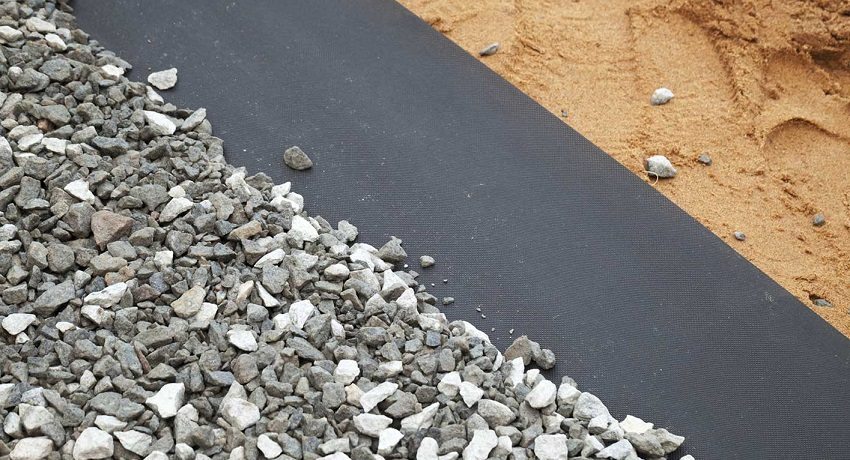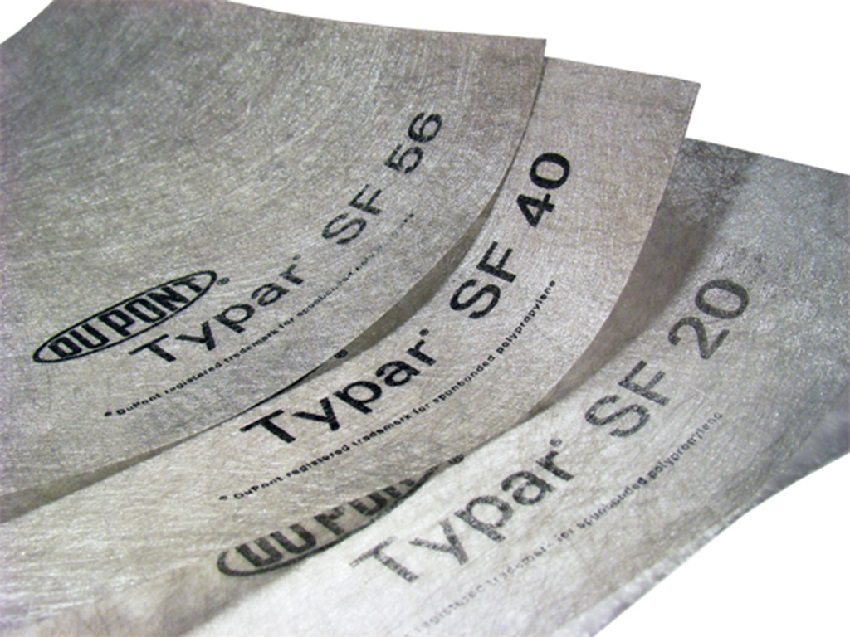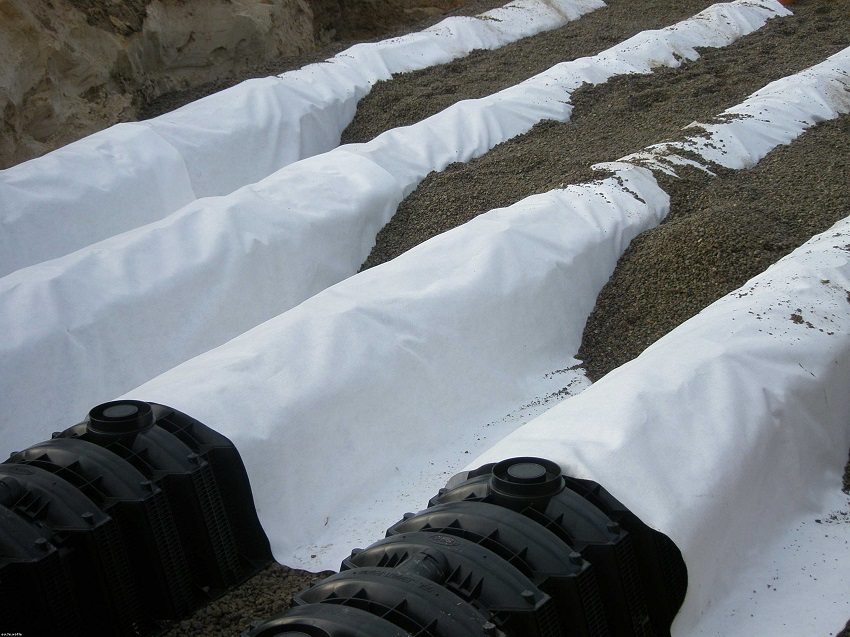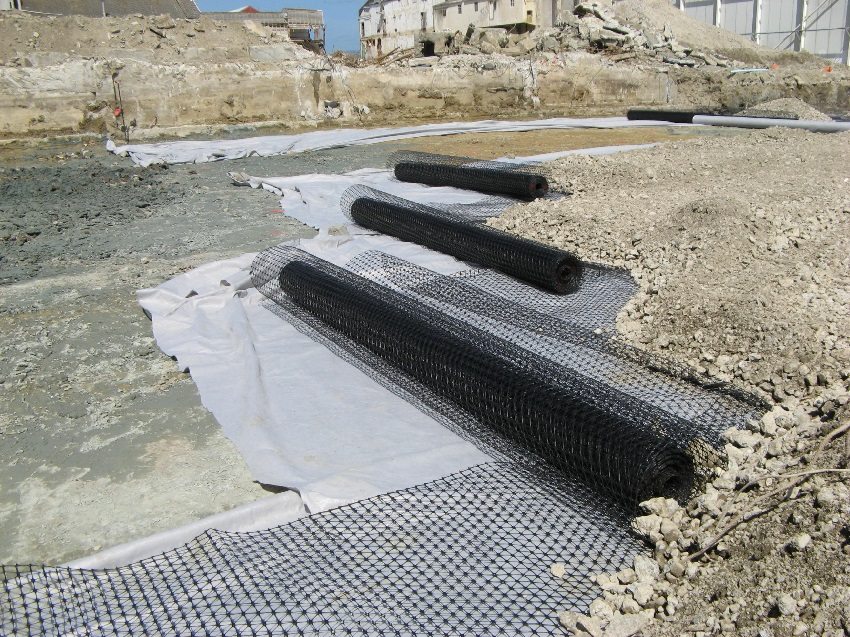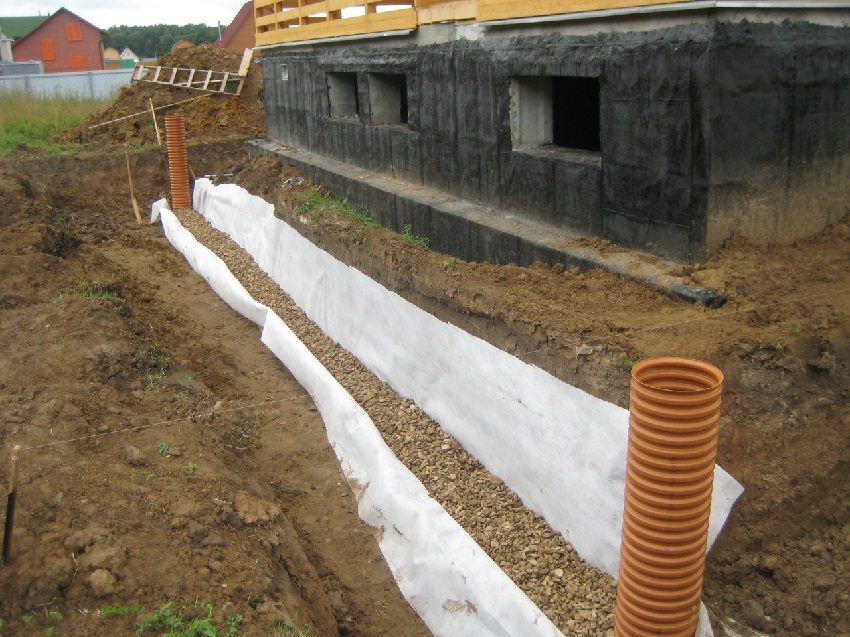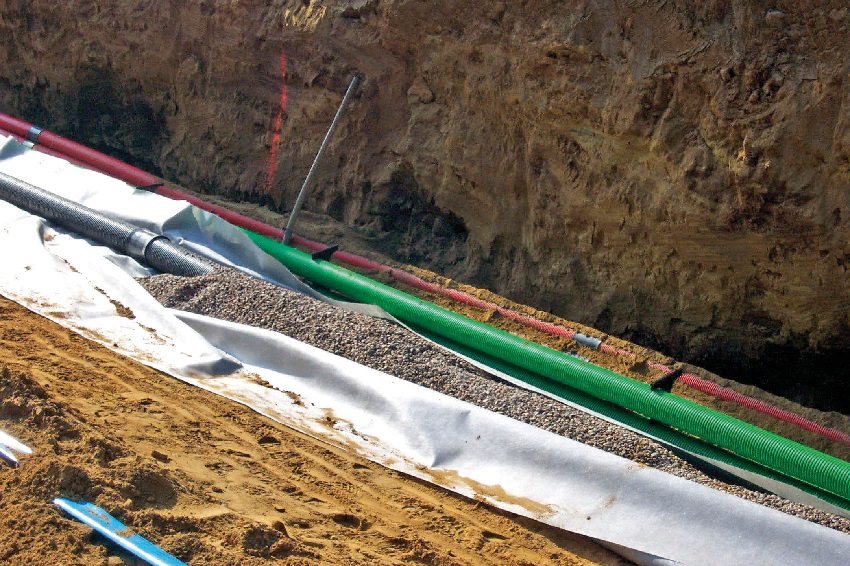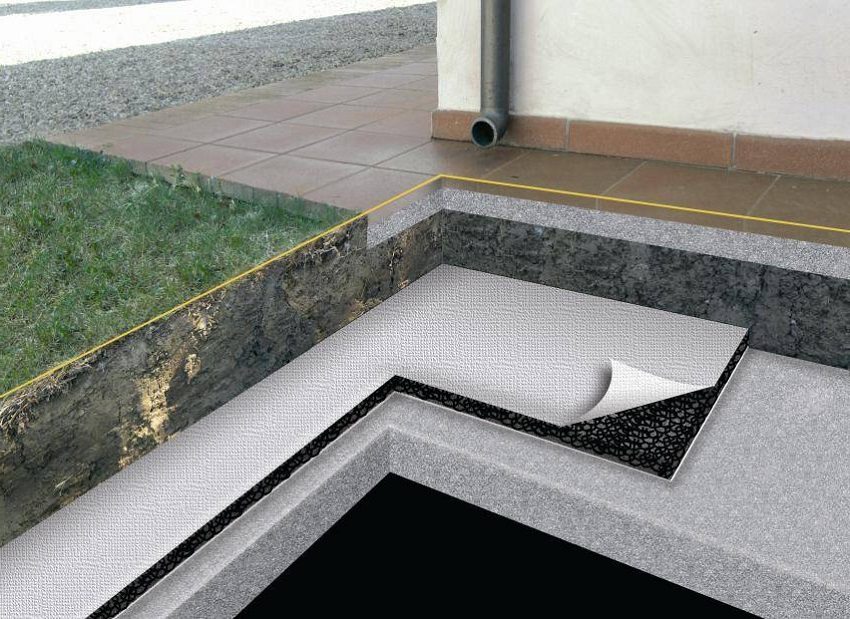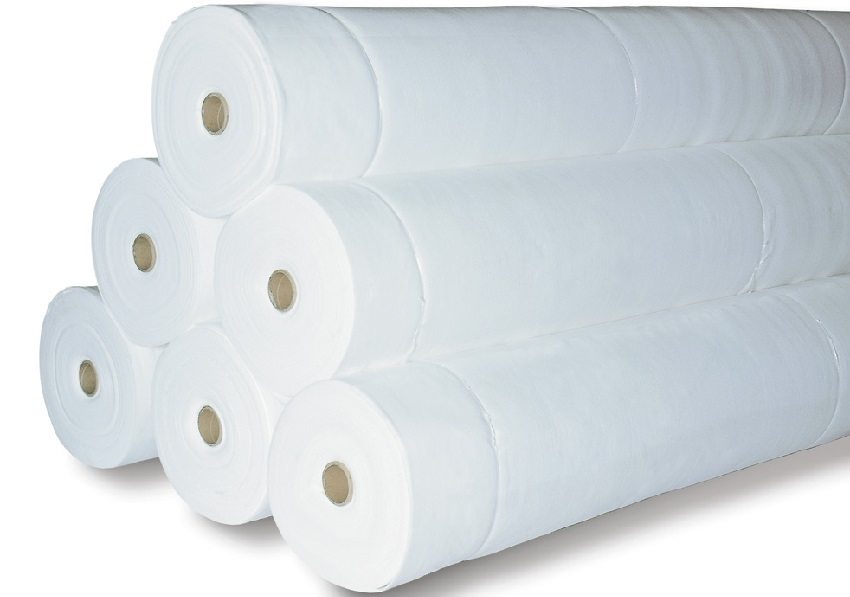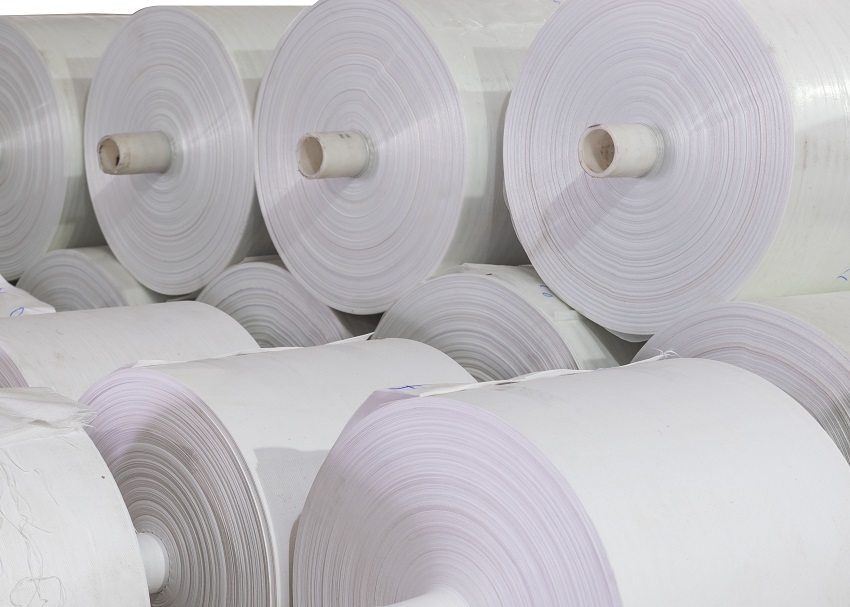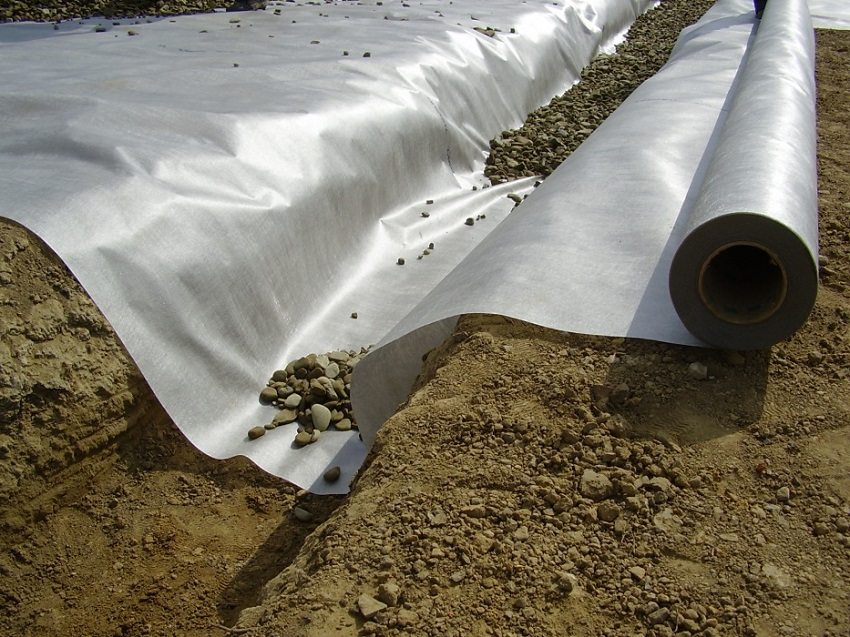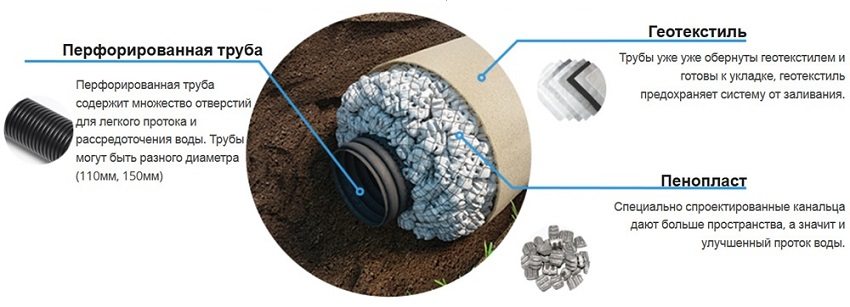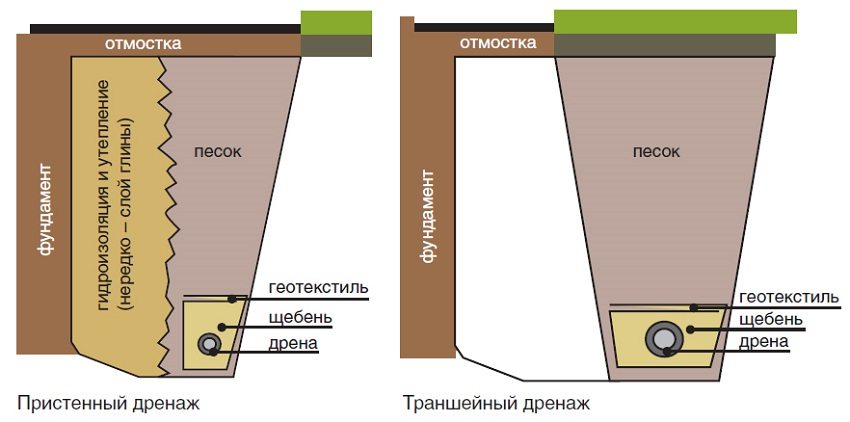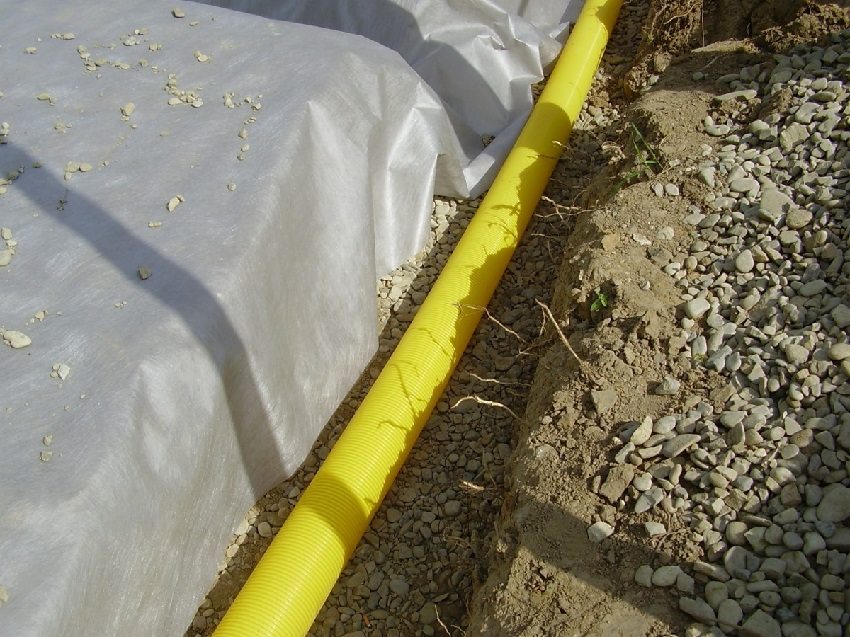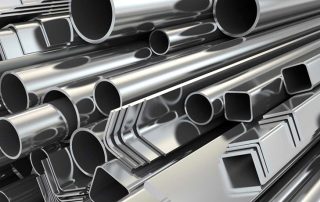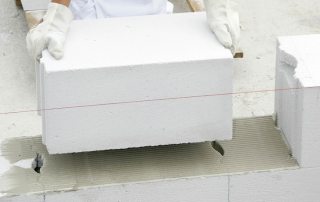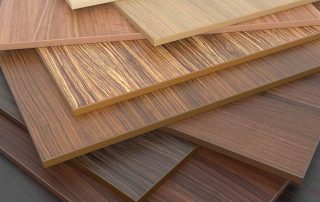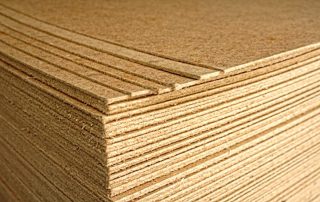Geotextiles have long ceased to be something unusual. Now it is widely used both in construction and in the arrangement of various systems, including the sewer. Consider the main types and characteristics of this material, how to choose and use geotextiles for drainage (geotextile) correctly. What you should pay attention to before buying geotextile for drainage, and what does not play a significant role.
Content
What types of geotextiles are
Geotextiles are of different types and, depending on the requirements of the operation, are used in different conditions. Therefore, the main criterion for the classification of geofabric is the material of its manufacture:
- polypropylene or polyester allows you to make the highest quality geotextile;
- from monofilament and staple raw materials, a product is obtained that has sufficient strength and quality, suitable for use in most construction work;
- geotextiles made by thermal bonding cannot boast of special strength, since they are the thinnest of all the options offered. However, it is he who has one of the best indicators when it comes to waterproofing;
- the use of mixed threads for the manufacture of geotextiles is not recommended, although such options are also commercially available. The thing is that cotton or woolen threads that get into the composition are very easy to rot. And this is a completely undesirable process when it comes to construction or arrangement of drainage.
Before choosing and buying geotextiles, it is necessary to decide where and in what works it will be used. Depending on this, the type of material from which it is made is selected. Which geotextile is best for drainage can be figured out by reading its main technical characteristics.
Drainage geotextile (geotextile): technical characteristics and scope
Geotextile for drainage or other systems is a material that has high performance:
- rigidity;
- elasticity;
- porosity.
It is these qualities that make it possible to use it for strengthening the soil, dividing the territory, filtering wastewater, protecting the slopes of the site, arranging drainage, etc.
Geotextile has gained particular popularity in Europe, where the construction of highways cannot do without its use. The synthetic origin of the material allows it to retain its characteristics for a long time, and its high strength allows it to withstand serious loads. Some manufacturers produce geotextiles with a density of up to 250 kg per break.
When it comes to private or industrial construction, geotextile also has its place here. It is widely used for the arrangement of urban sewage systems, in the construction of houses, railways, highways, in gardening and for drainage. What density of geotextiles is required for use in a particular area? For example, for the arrangement of drainage systems, geotextile with a density of 200 g / m³ and higher is used, about 100 g / m³ is enough for landscaping, and 800 g / m³ in the construction of runways for aircraft.
The principle of this material is very simple: it is a layer that is used to separate two other layers from each other, while providing additional density. For example, it helps to significantly reduce the risk of sinkholes on the road, and also prevents the erosion of the site by groundwater.
How to choose the density of geotextiles for drainage
In drainage systems, geotextile plays a very important role - it prevents the subsidence of the soil layer in the drainage system, and also prevents the process of diffusion of gravel into the water. Geotextile acts as a filter that preserves drain pipe and materials from flooding.
When thinking about which geotextile to choose for drainage, it is best to give preference to a material made of monofilament. It is easy to identify such material among others - it is given out by a snow-white color. Moreover, it is better if the fabric is made by thermal bonding.
If crushed stone is used as drainage, small stones are able to penetrate the material, creating damage in it. It is worth paying attention to when choosing a geofabric of the required density. The indicator for creating a drainage core will be at least 200 g / m³.
If you plan to wrap the drainage system, then geotextiles with a minimum density and thickness are suitable for this. Moreover, its water-repellent and other technical characteristics must be at the highest level.
What geotextile to use for drainage
There is a huge selection of geotextiles on the market, and if you don't have the proper experience in this area, you will almost certainly get confused. In order to make the right choice, you must carefully study all the requirements for drainage geotextiles. The price of the product also depends on these indicators.
The use of a cloth made on the basis of mixed materials is not allowed, since over time, cotton fibers tend to wash out, which significantly reduces the ability of geotextiles to filter liquid. Thus, the system will soon require repair, which will entail additional costs. Monofilament is the only option suitable for this case.
It is worth paying attention to the filtration coefficient, which the manufacturer indicates for this type of material. The optimal indicator is considered to be 125-140 m / day. A higher indicator is required only if the fabric is located in a soil with a high water inflow.
There are some requirements for the density of geotextiles for drainage, related to the permissible load. So, for a longitudinal load, the indicator should be 1.9-3 kN / m, and for a transverse load - 1.5-2.4 kN / m. In this case, the total punching shear strength should be at least 400-500 N.
Other parameters, such as the width of the roll, can be any, and are selected depending on the section of the filter layer. The cost of a roll largely depends on the manufacturer, as well as on the density of the material. You should not save on this, because low-quality geotextiles can subsequently be damaged and require replacement.
Drainage geotextile for arranging the foundation of the house
On how well the foundation of the house will be laid, its durability largely depends. That is why it is worth paying special attention to the arrangement of the drainage system in order to avoid the house being washed away by groundwater. Before starting work, you need to understand exactly at what depth the waters run, as well as what type of soil you are dealing with. This will help you navigate the choice of materials: pipes, geotextiles and rubble.
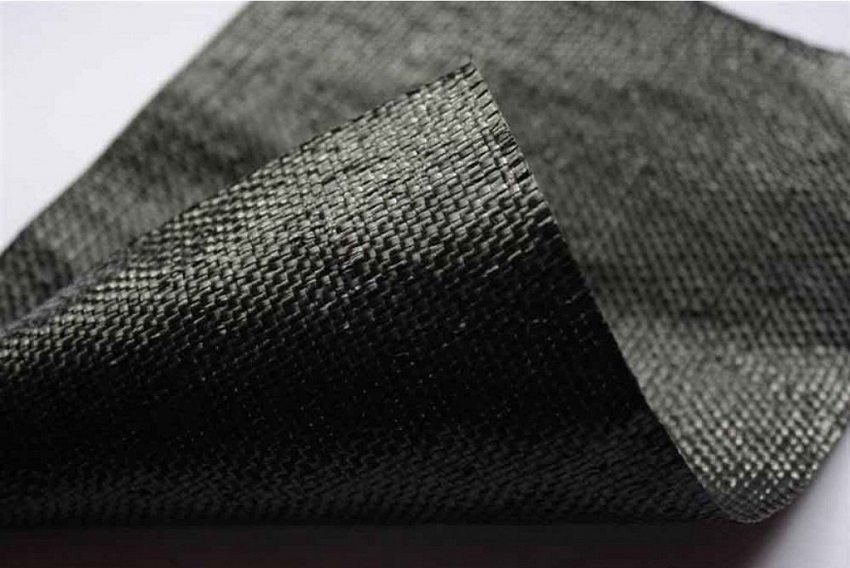
According to the production technology, thermally bonded and needle-punched geotextiles are distinguished
First of all, you need to dig a trench around the entire perimeter of the foundation. It should be dug with a slight slope towards the direction of water movement. In this case, the width of the recess is calculated based on the diameter of the pipes, as well as the required circumferential distance. For example, if you put a pipe with a diameter of 11 cm, then the space reserved for rubble will be about 10 cm.
Note! If there is a blind area, the trench must be placed along it.
Then sand must be poured into the bottom of the trench. The layer thickness should not exceed 5 cm. Geotextile is laid on top, which is immediately covered with gravel. Pipes are laid on top and rubble is poured again.
The upper and side layers of crushed stone should be at least 10 cm. All these components are covered with geotextiles, which are fastened with a wire with an interval of about 30 cm. Then everything is covered with soil and the drainage system for the foundation can be considered ready.
Garden drainage system
Too close location of groundwater can have an extremely negative impact on the life of plants that grow in the garden. However, a way to combat this phenomenon was invented long ago, and today it is quite easy to implement it even by your own efforts.
In order to divert water from the site, it is necessary to dig narrow herringbone-shaped trenches across its entire area. Narrow pipes with a diameter of 6.3 cm will be placed in them. They are cut into pieces of the required length and, using special tees, are connected at the bends.
It is at this phase that attention should be paid to the role of geotextile. It is necessary to make a drainage pipe in a geotextile filter. Each pipe section must be wrapped with geotextile at least three times, and the winding must be fixed with a wire.
After that, the layers are laid out in the following order: crushed stone, geotextile, crushed stone, earth.
Useful advice! At this stage, geotextiles must be overlapped to provide better protection.
Dornit: non-woven geotextile for general use
One of the options for geofabric, which is widely represented on the market today, is dornite. This is the name of a canvas made from polymer raw materials and used in the construction industry for filtration, reinforcement and as drainage. At first glance, dornite is not much different from ordinary geotextiles, however, this is not the case.
The technical characteristics of geotextiles are in many ways superior to other similar materials, primarily due to the method used in the process of its production.Needle-punched heat-treated geotextiles are capable of withstanding loads that far exceed those of conventional materials.
Non-woven needle-punched geotextiles are made using a special technology that improves the quality characteristics of the material. This made it possible to use it in many areas. For example:
- in the construction of railways and highways;
- for laying pipelines;
- as a base for laying paving slabs;
- for equipping flat areas for parking.
Having found its place in many areas, dornit helps to successfully solve the following tasks: increasing the strength of structures, separating soil and drainage layers, filtering and preventing soil leaching, protecting drainage systems from contamination.
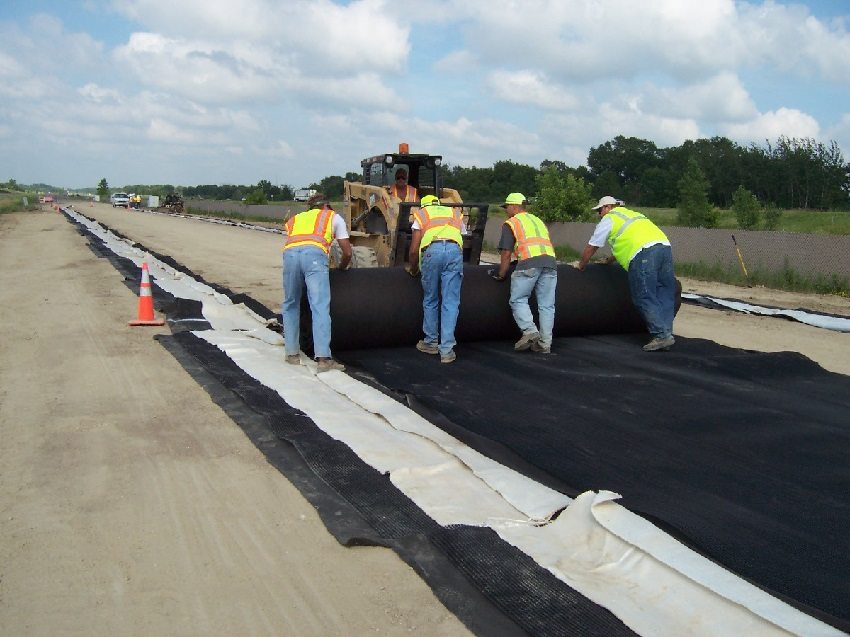
Geotextile is a common material used in the construction of industrial and residential buildings, including the laying of roads
Prices for woven geotextiles per m²
Despite its excellent technical characteristics, geotextiles are quite affordable. For example, the price of geotextiles for drainage for 1 m² is in the range of 10-20 rubles. Domestic material has a lower price per m². Geotextile for drainage from an imported manufacturer will cost a little more.
Note! Regardless of the price, you need to buy a geotextile for drainage that will meet all the requirements for geotextiles for this type of work.
The price of geofabric directly depends on the following indicators: density, strength, method and material of manufacture and manufacturer. Before you buy geotextile, be sure to check its technical characteristics.
If you plan to entrust the installation of the drainage system to professionals, then you should familiarize yourself with the prices for laying geotextiles. On average, the price of geotextile laying work starts from 30 rubles per 1 sq.m. It is easy to calculate that it will be almost 2 times cheaper to buy geotextiles for drainage on your own and lay it with your own hands.
Drainage geotextile laying technology
In order to figure out how to use geotextiles in the process of arranging a drainage system, we will consider what it is for and what types of it are. Based on the existing relief, one of two drainage options is used:
- open;
- deep.
The first option is dug channels that are located on the surface of the earth. They are easy to install, but they have a rather unsightly appearance. If we are talking about arranging your own site, then this option can be called unsuitable.
The deep system is not visible from the outside, as it is laid underground using special pipes and deeply dug trenches. It is to ensure the safety of pipes, as well as to equip the interior of the tanks, that geotextiles are used.
As mentioned earlier, geotextile is widely used for arranging drainage systems in private plots and the local area. Depending on the purpose and, accordingly, the density, the price of geotextiles for drainage will also differ.
Laying geotextiles in drainage tanks
Another important condition that must be observed in order for the geotextile to fully fulfill its role is to properly lay it in the drainage system. For this, there are rules, following which you can achieve the desired result:
- the bottom of the trench must be completely cleaned of construction debris. The walls should be as flat as possible;
- it is recommended to unpack the purchased geotextile immediately before laying, since the material is sensitive to sunlight;
- if necessary, the canvas can be cut to the desired size before laying;
- geofabric must be overlapped;
- it is categorically impossible to use those pieces of tissue that are damaged;
- laying should be done in such a way that the web is not too tight. At the same time, the formation of waves and folds is also unacceptable;
- if we are talking about laying geotextiles for drainage on large surfaces, then at this time it is necessary to fix the already laid sections in order to avoid their displacement;
- in order to maintain integrity, as well as minimize the negative effects of ultraviolet radiation, the drainage material should be backfilled into the trench immediately after laying;

A layer of crushed stone is laid on top of the canvas, preferably granite, which does not undergo erosion
- when the entire layer of drainage material is backfilled and compacted, the lateral edges of the geotextile should be wrapped inward. In this case, the free edges should be at least 20 cm long, this will help to avoid the likelihood of contamination of the filler;
- when all the edges are wrapped as expected, you can cover the trench with earth.
Which side to lay geotextiles
Another important question that arises in the course of work is which side to put geotextiles on? Even experts were divided here. Some of them argue that there is no significant difference, and the fact that one side is rough and the other smooth is just a cost of production. Reviews claim that no matter which side to lay the material, the characteristics of the geotextile remain unchanged.
Some manufacturers draw the attention of consumers to the fact that geofabric should be laid with the smooth side down. In this case, recommendations on which side to lay the geotextile in the drainage will certainly be contained on the product packaging.
Another opinion on the question of which side to lay the geotextile suggests using a rough surface for better adhesion to the ground.
In any case, when deciding which side to lay geotextiles on the ground, it is best to listen to the instructions of the manufacturer of drainage geotextiles you decide to buy.
